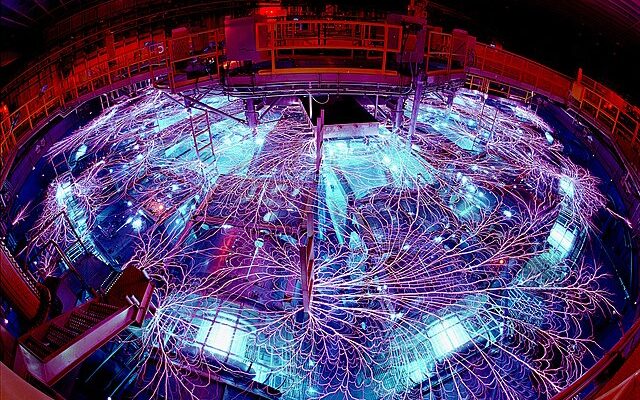
Fusion energy, often touted as the “holy grail” of sustainable power generation, promises to revolutionize the world’s energy landscape if it can ever be successfully harnessed. Unlike conventional nuclear fission, which involves splitting atoms and producing radioactive waste, fusion harnesses the power of merging atomic nuclei, typically isotopes of hydrogen, to release immense amounts of energy. The most prevalent fusion reaction involves isotopes of hydrogen called deuterium and tritium, which fuse to form helium and release tremendous energy in the process. This process replicates the energy-producing mechanism of the sun and stars, making it an attractive and virtually limitless energy source.
Last month, scientists took another step toward making the hope of fusion a reality.
Reuters reports that “scientists at the California-based lab repeated the fusion ignition breakthrough in an experiment in the National Ignition Facility (NIF) on July 30 that produced a higher energy yield than in December, a Lawrence Livermore spokesperson said.
Final results are still being analyzed, the spokesperson added.
Lawrence Livermore achieved a net energy gain in a fusion experiment using lasers on Dec. 5, 2022. The scientists focused a laser on a target of fuel to fuse two light atoms into a denser one, releasing the energy.
That experiment briefly achieved what’s known as fusion ignition by generating 3.15 megajoules of energy output after the laser delivered 2.05 megajoules to the target, the Energy Department said.
In other words, it produced more energy from fusion than the laser energy used to drive it, the department said.
Being able to replicate the results of the initial breakthrough served as a vital marker into building on the technology.
One outlet explained well how the most recent experiment worked, but revealed that we’re still a long way away from turning fusion energy into electricity.
“During last year’s test, the facility was able to generate 3.15 megajoules of energy, which was roughly 50 percent more than the energy in the laser beams. This time around, the group generated more than 3.5 megajoules, marking a significant improvement in just a matter of months.
The key to the improvement is down to the researchers’ growing understanding of how to control the underlying fusion reaction, Jeremy Chittenden at Imperial College London told New Scientist. By maintaining the plasma for longer, the team was able to squeeze more energy out of the process.
There are a lot of caveats. For a start, while the reactions generated more energy than was in the laser beams, actually powering the lasers and the rest of the facility used considerably more energy. For a fusion reactor to be viable, it would need to generate significantly more power than the total energy required to run the plant.
What’s more, the approach to fusion taken at the lab is not particularly well-suited to creating a working power plant. It takes a full day to set up a single ignition experiment like this because the lasers need time to cool, and the researchers need to replace the fuel pellet manually. To generate a significant amount of power you’d need to be running the reaction multiple times a second.”
One of the critical advantages of fusion energy is its inherent safety. Unlike fission reactions, which can lead to nuclear meltdowns and the release of harmful radiation, fusion reactions do not result in the runaway chain reactions that cause such catastrophic events. Fusion produces minimal long-lived radioactive waste, making waste disposal and management significantly more accessible and less hazardous. Furthermore, fusion fuels like deuterium can be extracted from water and lithium, which are abundant resources, ensuring a long-term and sustainable energy supply.
In recent years, governments, private companies, and international collaborations have invested substantial resources into fusion research. Projects like the International Thermonuclear Experimental Reactor (ITER) in France aim to demonstrate the viability of controlled fusion reactions. If successful, fusion energy could offer a transformative solution to the world’s growing energy demands, providing a nearly limitless, safe, and environmentally friendly source of power that could potentially reshape the global energy landscape for generations to come.
It might be baby steps, but things look like we’re moving in the right direction.










Need this worldwide NOW